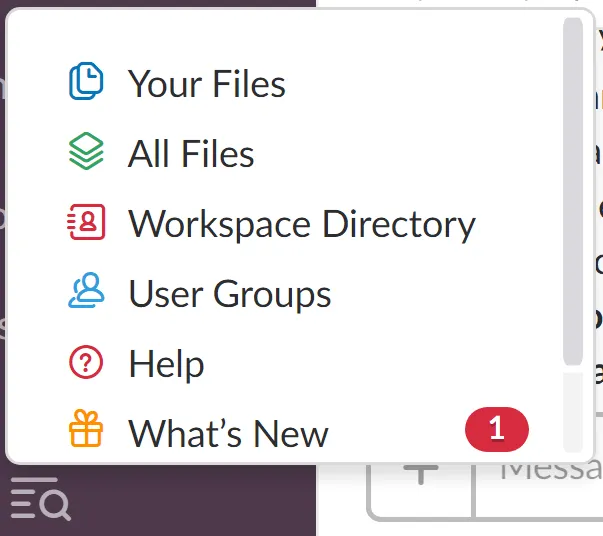The Most Effective Ways To Prevent SaaS Customer Churn

Churn is the archenemy of growth.
I’m pretty sure you know how difficult it is to cut through the noise and be noticed. And even after investing time and money to generate traffic, it’s obvious that the real work hasn’t even started yet.
Lead generation is a tough process that requires time and fine tuning. Every trial user is important and a low conversion rate is highly detrimental. Trial users who don’t turn into paying customers represent the first form of churn. Once trial users drop-off, all your lead generation efforts are in vain.
A short period of customer retention represents a second form of churn which is equally dangerous.
Churn prevents SaaS companies from covering acquisition costs and generating a positive cashflow and, unfortunately, is directly proportional to the number of customers a business acquires.
Churn follows a negative exponential distribution which is the direct opposite of a healthy exponential growth. Therefore, a short customer lifetime value has a direct impact on cashflow while also preventing viral growth.
A study carried out by Frederick Reichheld of Bain & Company found that increasing customer retention by 5% can increase profits by 25% to 95%.
The secret to a steady growth is securing a solid and loyal customer base that constantly contributes to the MRR by a) successfully working with your product for a long time and b) through referrals.
Increasing trial to paid conversion and customer retention rates should be the primary mission of every SaaS company, and this requires a lot of work that involves product management, user experience, customer experience, customer success, and customer support.
Table of Contents
Converting Trial Users into Customers
Customer success is not only a department. Customer success is the overarching approach of an entire company, from marketing to sales, product management, and operations.
Customer success is a process that starts with the very first interaction with a potential customer. From promotional activities to educational content, retention is a strong component of a customer-centric approach that focuses on working together towards the same goal.
Every touchpoint leaves a permanent mark that ultimately affects retention.

Every step in the customer journey represents a unique opportunity to remind users of the value of your solution. Once a customer loses sight of the core advantages, they stop engaging with your product.
The most critical phases are:
- Onboarding
- Trial to paid conversion
- Initial 90 days
- Renewal
Especially at these stages, if a user isn’t completely satisfied with their customer experience or if they can’t see how you can help them move closer to their goals, they’re likely to churn.
Avoid Common UX Issues That Impact Churn
A smooth user experience is primarily connected to a good product that meets the expectations of the user.
That’s why product management plays such a pivotal role in customer retention.
Each product release needs to be a perfect edition of the current version of the product. Even though the product roadmap is infinite and the product will never be complete, customers expect to interact with a polished and well-functioning product.
Product managers need to accept compromises at each step but each release, even if lacking potential key features, needs to work perfectly and meet all the requirements that can ensure customer success.
An initial bad impression is really hard to recover from, and users don’t really count on your promises. It’s okay to communicate what’s coming next to keep users interested and engaged with your product, but they’ll ultimately judge you by what they see, not what they hear.
Instant Usability
Another problem connected to UX is connected to usability.
Speed is everything!
We’re used to interacting with new applications that allow us to immediately achieve our goals.
Think of Netflix, Amazon, Spotify, Uber…users expect instant access and usability.
But for these platforms the task is relatively easy, since their product is specifically designed to accomplish one single task.

The problem is way more intricate for SaaS applications that often present a much higher level of complexity. No matter how many modules, menus, and features your product has: users expect to be instantly able to set up their working environment and quickly achieve significant results.
Any delay between the sign up phase and the first results dramatically increases the probability that a customer churns.
A frictionless user experience means that the user can immediately operate the application they’re testing without feeling lost or frustrated. The product must meet your customer’s requirements and expectations (set by promotion and communication with marketing or sales) and they need to perceive an immediate benefit and quickly achieve their goals.
Low feature adoption leads to users who don’t fully comprehend the potential of a piece of software.
Therefore, guidance is an essential component of a pleasant customer experience.
Focus on a Great Onboarding
Onboarding new users means quickly meeting several targets including showing the capabilities of your solution, convincing users of the value of your product, and immediately guiding them through the interface and through the most salient processes to make sure that everything is properly set up to work perfectly.
A well-designed onboarding process must aim to meet and possibly even exceed your user’s expectations by guiding them to reach a quick win as fast as possible.
The way you onboard your users has an indelible impact on retention. Leading customers to see first results without any delay and frustration means creating a great first impression that will set the mood for the entire customer journey.
Users now also expect a personalized approach that also requires you to automate the onboarding process and segment users.
Showing a welcome screen and actual faces can be very helpful as well.
That’s why simply showing tooltips and explaining the user interface is not enough. You actually need to provide users with actual interactive guidance that can truly support them along the journey.

The overall onboarding experience needs to be meaningful and users have to feel a sense of accomplishment that will push engagement and activation.
During the onboarding phase you need to guide users by the hand through all the processes that quickly lead to instant results while highlighting the unique selling proposition of your product.
“If new subscribers aren’t taken by the hand and shown exactly what they need to do and when and how to do it, they’re unlikely to use your product or service.”
Sam Thomas Davies
Engagement and Activation to Fight Churn
After onboarding your users within your platform, it’s time to keep in touch with them to make sure that they return back to your service as soon as possible and continue their customer success journey.
Emails, surveys, and check-in calls are some of the options that can help boost activation.
If users experienced a pleasant onboarding characterized by a sensational UX, they’re more likely to keep engaging with your product.
If you put in place a strong customer success program, you can decide to go for a very high-touch approach and actually get in touch with the client to find out what their specific goals and needs are and to plan a roadmap to help them integrate your solution in their ecosystem and set specific targets.
It’s important to remember that forcing a weak use case in sales can only lead to churn. Even if it might be tempting to add some revenue to the bottom line, customers who actually can’t benefit from your product will eventually churn.
Creating an honest and transparent relationship with the customer involves prioritizing their experience and supporting them along the entire journey with information, data, and updates. Building a personal relationship is the easiest way to guarantee success and promote advocacy.
Surveys are precious instruments that SaaS companies need to use to know more about their customer and can also be used to find out how they prefer to communicate.
Different people prefer different forms of communication and you need to offer multiple solutions to your customers so that they can choose whether they prefer to be assisted on the phone, via email, or live chat.
Every contact with the customer is an opportunity to remind them of why they signed up for your product. You can send stats and reports, or articles and ebooks that support your customer’s strategy.

Even sending an invoice can become a unique occasion to include precious information or special announcements
Great UX leads to engagement, and constant communication leads to activation.
Highly active users are bound to become loyal customers and fans of your solution!
Keep in Touch With Your Customers During the Famous Critical Phase
The majority of customers churn within the first three months. Companies like Hubspot used to offer an intense customer success program to assist customers during the entire course of the first 90 days characterized by back-to-back check ins.
Asking for feedback about your product and the overall experience during this period is a key component of a long-term relationship.
And of course, attractive discounts for annual subscriptions can be inviting and beneficial for both, you, and your customer.
If a customer commits from the very beginning, they’re more likely to invest time in understanding and using your solution to the fullest to get a proper ROI.
Every micro-commitment leads to higher retention.
Monitoring Behavior and Be Proactive
Customers who are about to churn send all sorts of signals. Customer success solution such as Natero for example are designed to monitor your customer health status and send specific alerts.
Customers don’t usually stop engaging with your solution all of the sudden.
If you see a drop in engagement, you can predict churn and intervene with re-activation emails, discounts, or special offers such as unlocking specific features for free, or adding new users.
The more team members are used to working with your product the more internal champions and endorsers you’ll have.

You can use predictive analytics or surveys to make sure that your product is actually helping your client achieve their goals while also offering support and updates.
The general idea is that you need to collect as much data about your Customer Experience as you can. Tools like Fullstory can help you monitor and evaluate the entire customer journey in real time.
Offer Great Customer Support
Customers don’t churn simply because problems occur. There can always be something that goes wrong.
The real differentiator here is the way your company deals with the problem.
A prompt and effective reaction to a problem can actually solidify your relationship with the customer and increase their level of trust.
Make it easy for your customers to reach out. Offer a direct channel to interact with you and make sure that your response time is extraordinary. And again, try to collect feedback on your support strategy, monitor, adjust, and repeat the cycle!
Add Novelty to Your Relationship
It’s always intriguing to see the little gift box in Slack prompting new features.
It shows that behind the product there’s a team that keeps working on improving your experience.
Listen to your customer requests, directly or indirectly (maybe through social listening). Show that you care and that you can react quickly.
The best thing you can do is showing that you already have a precise direction in mind when it comes to your product but that you’re also agile enough to work on specific feature requests when necessary.

I remember signing up for a product a few years ago. One of the most essential features that all other competitors offered was missing so I tried to contact support to find out if there was a different solution to my problem or if the feature was at least scheduled to be introduced at some point.
Instead of getting an answer I was directed to a forum where users could suggest features and changes. They said that if enough people would seem interested, they’d immediately work on it. I found a thread in which somebody suggested the same feature I had in mind. The post was upvoted something like 5,000 times and had been there for over two years. My reaction was predictable: click on account, deactivate, unsubscribe from all future incoming mails, bye bye.
Value Throughout the Journey to Avoid Churn
You never stop selling your solution.
From lead generation, to onboarding, the initial delicate phase at the beginning of the customer journey, and support, the entire team of a SaaS company needs to focus on adding value to the overall experience.
Selling your product means quickly leading customers to their moment of first delivery (when they realize they achieved an important task that leads them closer to their goal) , presenting your application individually to each user in order to help them reach that specific aha moment as quickly as possible, keeping in touch with them, triggering activation, and creating a perfect cooperation that leads to success.
In the digital era, churn is addressed with a customer-centric mentality that focuses on their specific needs and quickly leads to effective solutions.
And if you want to read some premium tips on customer success, check out our blog post in which we put together the Ultimate Customer Success Playbook. We interviewed some of the most influential experts in the field to find out what tactics and tricks they’d recommend to address some of the most common customer success issues, including churn and low conversion rate!

